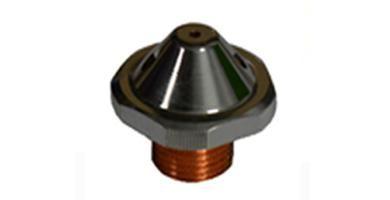When looking to buy a CO2 laser machine, it is important to consider a number of primary attributes. One of the primary attributes that bifurcate the type of laser tube which machine uses is its laser source. There are major two options including water-cooled glass tubes and air-cooled metal tubes. Let’s look at the differences between glass and metal laser tubes.
Metal Laser Tubes
Metal laser tubes use radio frequency to fire a fast pulsing laser with quick repeatability. Most of the metal tubes use air cooling system excluding higher wattages. They perform the engraving process with ultra-fine detail as they have a smaller laser spot size. They have a longer life span of 10-12 years, given they have premium parts like bystronic parts or prima spare parts, before the need for the refurbishing of gas arises. Its turnaround time in some cases can be quite long.
Glass Laser Tubes
Glass laser tubes come at a lower cost. They produce laser with the direct current. It produces good-quality beams which work well for laser cutting. However, here are some of its drawbacks.
There are some safety issues as it operates with a water-cooling system. The DC power supply excite the CO2 gas in a glass laser tube. It needs high voltages for the operations. And combining such levels of voltage with a water-cooling system, it might create some safety hazards.
Glass tubes need water-cooled temperatures as it is a poor thermal conductor. Hence, in order to remove the heat from the system, it is important to keep water circulating. If there is no water-cooling system in place, a glass laser tube would overheat and become inoperable. It might increase your production cost. It also introduces other points which can come as your maintenance cost.
The DC process limits the rate at which the laser tube can work. While the laser engraving process is running in progress, it doesn’t fire in one continuous burst. Rather, it “pulses” while moving and working across the material. When DC-excited laser tubes work on the piece, they tend to pulsate less. It significantly reduces engraving speeds and lowers quality.
Plus, there will be concerns over the lifetime of DC-excited glass tubes if they don’t have premium parts like bystronic parts or prima spare parts. Glass is naturally a fragile element. After a period of time, DC-excitation process can bombard a tube’s optics and electrodes with ions. It increases the chance of deterioration over time. Most of them come with a 6-month warranty. At the time of system failures, you will have to purchase a brand-new laser tube, which will increase your costs and waste.
Here’s the one-on-one comparison between two:
Cost: DC laser tubes are cheaper than metal tubes. This cost difference is a result of lower technology and manufacturing cost.
Cutting Performance: To be realistic, both laser tubes are appropriate at their place. However, because the RF lasers work on a pulse base, these materials show a slightly rough edge. With that difference, the quality of the final results is hardly noticeable to most of the users.
Performance: Metal laser tubes generate a smaller spot size out of the output window of the laser. For high precision engraving, this smaller spot size would make a difference. There are various applications where this advantage would be clearly visible.
Longevity: RF lasers last 4-5 times longer compared to DC lasers. Its longevity can help offset the initial higher cost of the RF laser. Due to its capacity of refilling, the process can be more expensive than the replacement cost of a new DC laser.
Comparing the overall results, both of these tubes are perfect at their own place. Understand their use cases, their making, their parts like bystronic parts, and choose which is more perfect for your business model.













No Comments